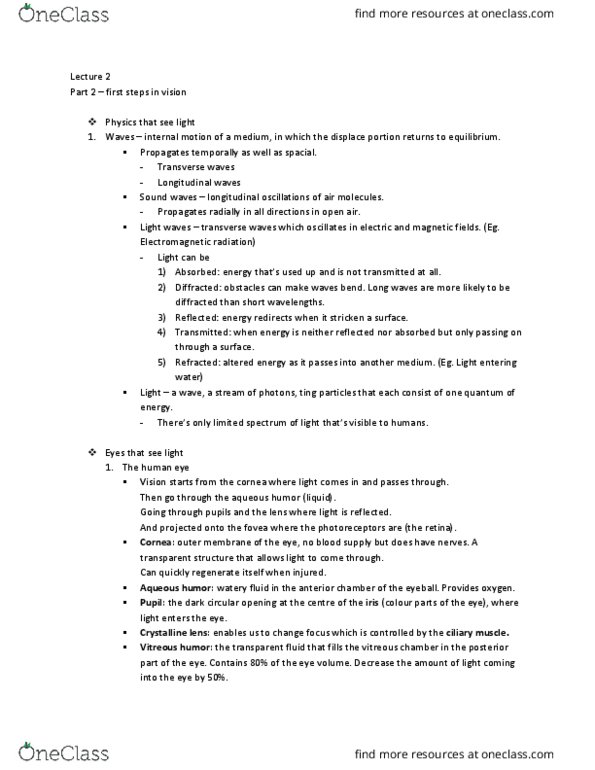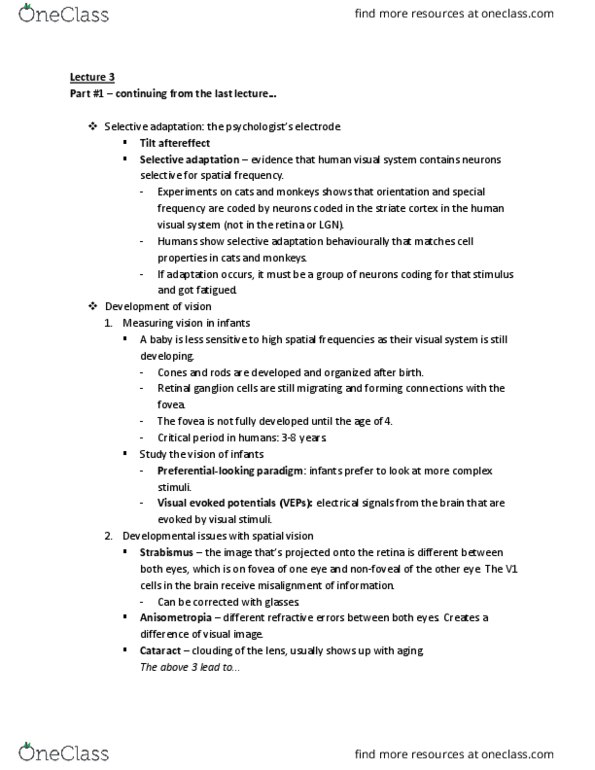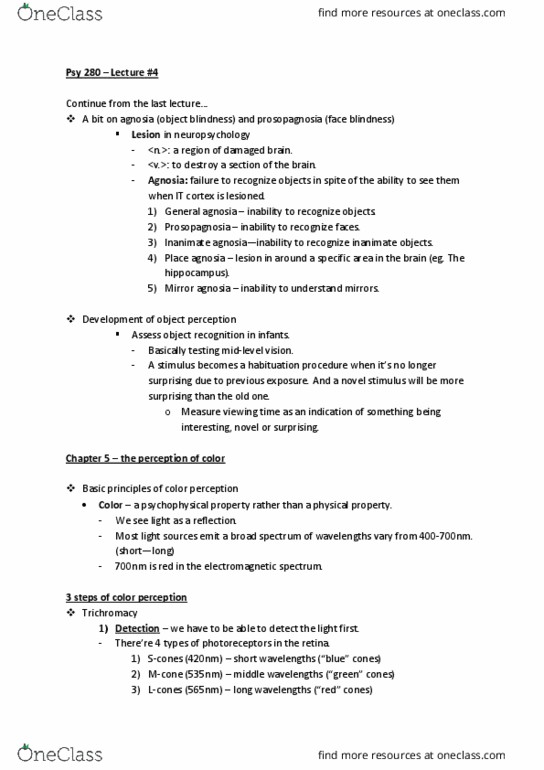PSY280H1 Lecture Notes - Lecture 3: Retinal Ganglion Cell, Anisometropia, Spatial Frequency
PSY280H1 verified notes
3/13View all
Document Summary
Part #1 continuing from the last lecture . Selective adaptation: the psychologist"s electrode: tilt aftereffect, selective adaptation evidence that human visual system contains neurons selective for spatial frequency. Experiments on cats and monkeys shows that orientation and special frequency are coded by neurons coded in the striate cortex in the human visual system (not in the retina or lgn). Humans show selective adaptation behaviourally that matches cell properties in cats and monkeys. If adaptation occurs, it must be a group of neurons coding for that stimulus and got fatigued. Development of vision: measuring vision in infants, a baby is less sensitive to high spatial frequencies as their visual system is still developing. Cones and rods are developed and organized after birth. Retinal ganglion cells are still migrating and forming connections with the fovea. The fovea is not fully developed until the age of 4. Critical period in humans: 3-8 years: study the vision of infants.




